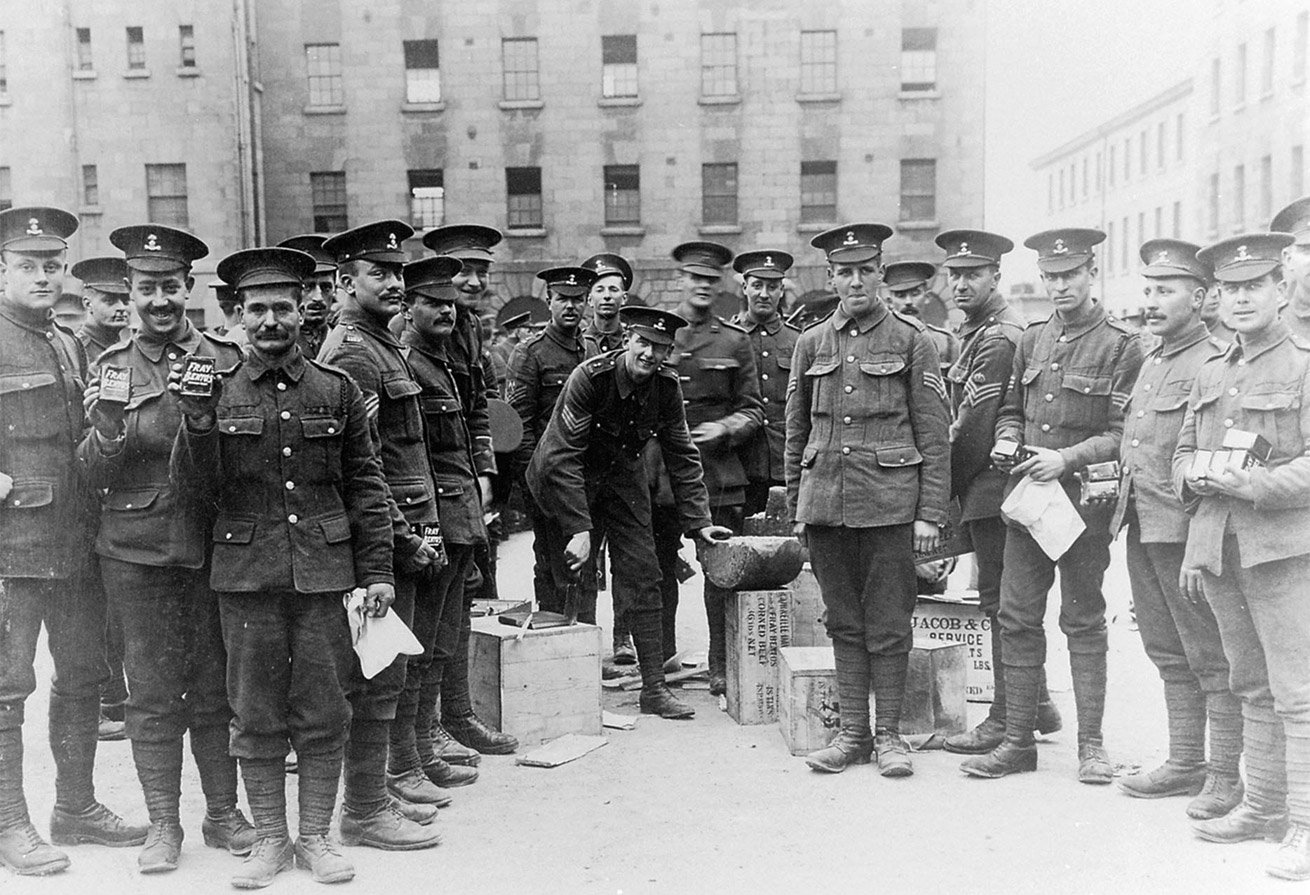

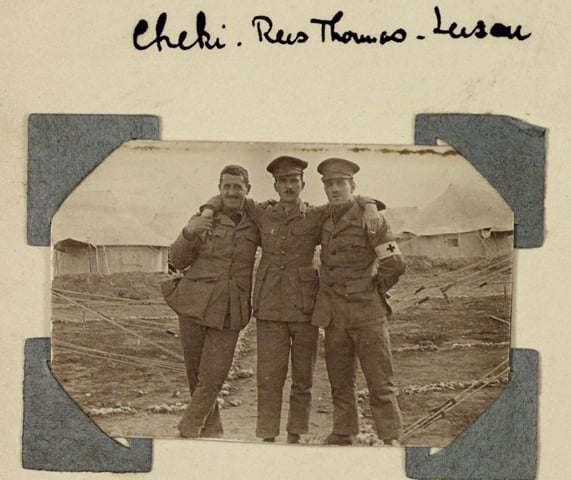
This guide details the background to the major Irish Regiments that served in Gallipoli. It is worth remembering that just because a regiment was Irish, did not mean that all members within that particular regiment were Irish. Also, given the heavy casualties in Gallipoli and the need for regiments to remain at fighting strengths, men from elsewhere would have been added to the Irish regiments to supplement the numbers.
Formed in 1881 the Royal Inniskilling Fusiliers were an amalgamation of the 27th (Inniskilling) Regiment of Foot and the 108th Regiment of Foot (Madras). The 1st Battalion served in Hong Kong and Singapore, prior to fighting in the Boer War. After South Africa the 1st Battalion spent a period of time in Ireland before travelling to Crete, Malta, China and India. At the outbreak of World War One the 1st Battalion was recalled from India and stationed at Omagh and in England prior to being shipped to Gallipoli. The 1st Battalion landed on the first day of the Gallipoli campaign and would remain on the peninsula until their evacuation in December 1915. The battalion served on the western front for the remainder of World War One and was then sent to India. Unlike other Irish regiments it was not disbanded following Irish independence, and saw action in Burma during World War Two. In 1968 the Royal Inniskilling Fusiliers were merged with the Royal Ulster Rifles and the Royal Irish Fusiliers to become the Royal Irish Rangers.
More information on the Royal Inniskilling Fusiliers can be found via the Inniskillings Museum.
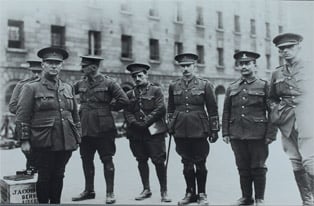


The Royal Dublin Fusiliers were founded in 1881 by an amalgamation of previous regiments. The men who enlisted were largely drawn from Dublin, Kildare, Carlow and Wicklow, and the regimental headquarters were at the Naas Barracks, in Naas, County Kildare. The 1st Battalion of the Royal Dublin Fusiliers was originally based in Ceylon (Sri Lanka) and then spent the years 1886-1899 between England and Ireland. In 1889 it was moved to South Africa to fight in the Boer War. Following on from the South African campaign the battalion was posted in Crete, Malta, Egypt and India where it was stationed at the outbreak of World War One. The 1st Battalion took part in the initial landings at Gallipoli on 25 April 1915. Like the 1st Battalion of the Royal Munster Fusiliers losses were heavy in the initial days at Gallipoli, and for a period the two battalions were merged to create what was called the Dubsters. After leaving Gallipoli on 1 January 1916 the 1st Battalion served on the western front and were briefly part of the British Army of Occupation in Germany in 1918. The Royal Dublin Fusiliers were disbanded in July 1922.
Further details on the Royal Dublin Fusiliers can be found on their Association website.
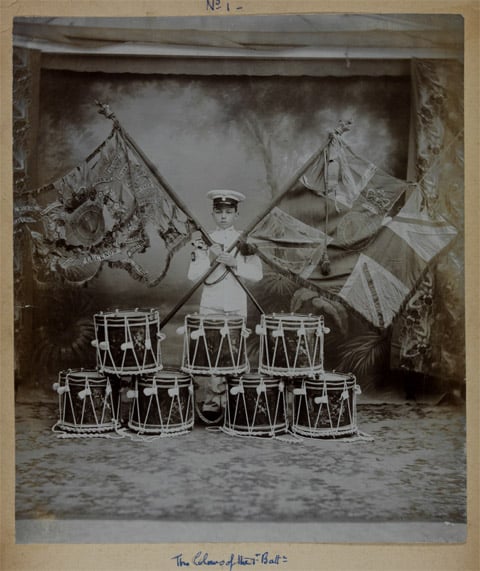
The Royal Munster Fusiliers were formed in 1881 following the amalgamation of two regiments. Their regimental depot was at Ballymullen Barracks, Tralee, and the regiment traditionally recruited strongly from the counties of Cork, Limerick, Kerry and Clare. In the decades leading up to World War One the 1st Battalion of the Munster Fusiliers served in Nova Scotia, took part in the Boer War, was stationed in north-west India and then Rangoon. The battalion was called back from Rangoon at the outbreak of World War One, and stationed at home prior to its despatch to Gallipoli where it took part in the initial landings of 25 April 1915.The Munsters would remain in Gallipoli throughout the campaign, before being evacuated in January 1916. It was then moved to the western front, and took part in fighting at the Somme in July, and remained active on the front until the end of the war. The Royal Munster Fusiliers were permanently disbanded on 31 July 1922 following Irish independence.
Further details on the Royal Munster Fusiliers can be found via their Association website.
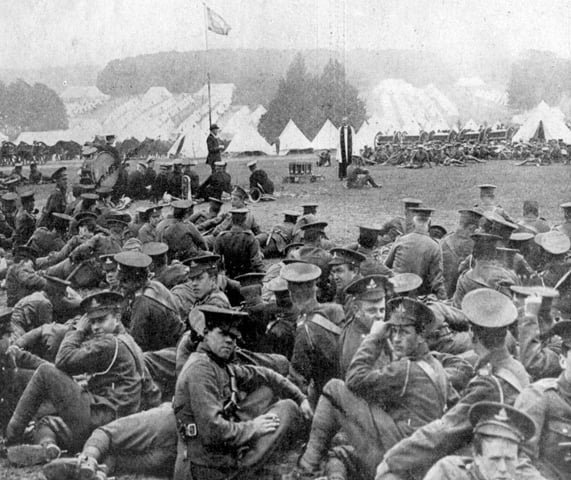
The 10th (Irish) Division was not part of the regular, pre-War army, but was made up of new recruits after a call for men made by Lord Kitchener, Secretary of State for War. It recruited men from across Ireland (and beyond) and was trained at the Curragh during the autumn and winter of 1914. It was then moved to England prior to departure for Gallipoli to take part in the August offensive. The 10th (Irish) Division that went to Gallipoli comprised the 6th Battalion Royal Irish Rifles, the 5th Battalion of the Connaught Rangers, the 6th Battalion of the Leinster Regiment, the 6th and 7th Battalions of the Royal Munster Fusiliers, the 6th and 7th Battalions of the Royal Dublin Fusiliers, the 5th and 6th Battalions of the Royal Inniskilling Fusiliers, the 5th and 6th Battalions of the Royal Irish Fusiliers and the 5th Battalion of the Royal Irish Regiment. The 10th (Irish) Division would stay at Gallipoli for less than two months but would see some intense fighting at the Suvla Bay section. The division spent 1916 and 1917 in Salonika. In the autumn of 1917 it moved to Egypt and was then split in 1918 with ten divisions going to France and the remainder to Palestine. In line with all volunteer divisions, the 10th was disbanded at the end of the war.